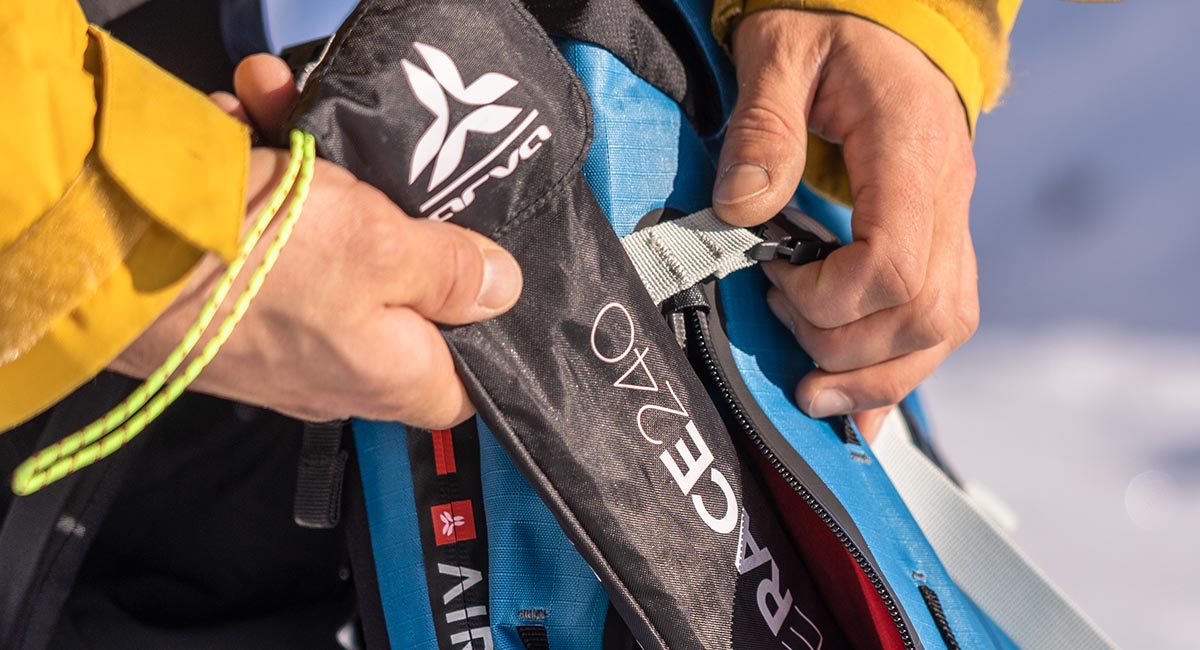CHOOSING YOUR AVALANCHE PROBE
The avalanche probe : what does it do ?
In the penultimate stage of the avalanche victim search phase, probing makes it possible to discover more precisely where the victim is located, and in particular, at what depth. This gives you an idea of the quantity of snow you have to shovel before you can free the victim and ensures you can still see their location during the shoveling phase.
Studies have shown that the extraction time for a victim is approximately 25 minutes without a probe, compared to 11 minutes with a probe. So it isn't easy to effect a rescue within the first 15 vital minutes without a probe.
While the probe does not seem to be a complex tool at first glance, choosing the right avalanche probe is essential to search for a victim effectively. Not all probes are created equal, and a poor choice of probe can cost you precious minutes in the event of an emergency.

How to choose the right avalanche probe
The length
The first key criterion : the length of your avalanche probe. The standard dimension is now 2.40 metres to allow you to easily find the victim even in the event of relatively deep burial. This length can go up to more than 3 metres for mountain professionals who may face more complex terrain and conditions.
The diameter
It must be thick enough not to twist if it encounters a hard surface. A probe that is too thin could also cause you to miss a victim, especially if they are deeply buried. So opt for a diameter between 10 mm and 12 mm. Mountain professionals use 13 mm diameter probes that are more reliable due to their longer probe length and because the terrain is generally more demanding.
Quick assembly system
To be as effective as possible, you have to be able to assemble your probe very quickly. What's more, if it comes apart every time you remove it from the snow, you will lose precious time. In addition, a probe that is not rigid enough risks not letting you feel the victim correctly and could hinder your rescue.
Our ARVA probes all feature a quick assembly system. Some of our probes use a rope tensioning system ; others have a cable tensioning system.
- Rope tensioning : the Flash Lock locking system allows the blocking knot to be tensioned quickly.

- Cable tensioning : the Pin Lock and Rack Lock systems ensure precise and instantaneous tensioning by simply pulling on the locking handle. The Rack Lock system is the most precise since it allows each notch to lock.

Visual graduation system
An easy-to-read graduation system is essential to visualise how far down your victim is under the snow more clearly. Shown as plainly visible figures, it also gives you a clearer understanding of how much snow must be cleared to reach them.
The tip of the probe
A probe tip with a larger diameter than the rest of the probe provides better snow penetration and reduces friction while probing. Our probes also have pointed tips, which are much more effective in the hard snow of an avalanche.
Materials
The material used for a probe is also very important and determines its rigidity and weight. Our aluminium probes use top-quality 7075 aluminium, which is reliable and durable. We also use carbon for our lightest probe, the Race 240.
Our ARVA avalanche probes

Regardless of the probe chosen, the probing technique is still the same ! Let us explain how to conduct an effective probing exercise.

Probing techniques
After searching for the victim's location using the transceiver, the probe lets you identify as precisely as possible where the victim is so you can shovel efficiently. Probing also gives you precise information about how much snow is above them. Probe following the form of a perpendicular spiral, planting the probe every 25 cm.
To probe effectively, keep your gloves on and use both hands, planting the probe perpendicular to the slope. Be sure to practice the probing technique to get used to the sensations you will feel in the face of the elements (ice, rock, or body).

And an extra piece of advice
To save time, the location of your probe in your bag is extremely important. Store your probe in a dedicated pocket in your backpack, easily accessible from the front. Also, remember to remove its case: this means one less step if you have to take it out of your bag and use it !
Once you have found your probe, don't forget to equip yourself with an avalanche shovel, the final crucial tool in an avalanche. Look at our article about choosing your avalanche shovel !